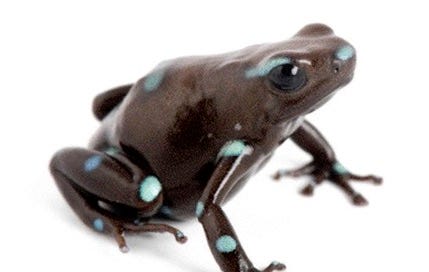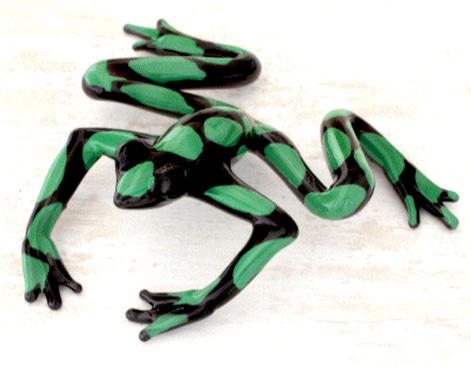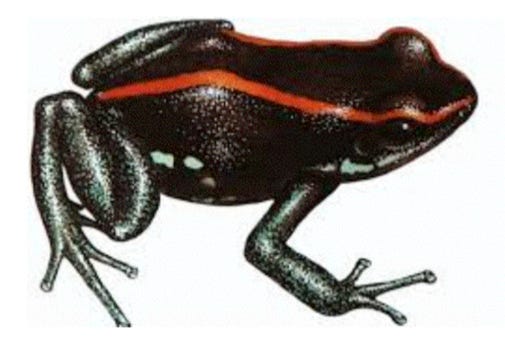THE GREATEST SECOND-CHANCE FROG QUEEN (Part 2)
Frog Queen Gertrude has a lot more to say about improving our human species. PS. All excerpts are from my ©2022 book: https://www.amazon.com/dp/B09QML8BQN
What else was different for frogs?
Well, it took a very discerning ear to hear the difference between croaks, which was the basic language of us frogs. A croak might mean, “I’m hungry.” Or it often meant, “Let’s go swimming.” Most other species of amphibian couldn’t hear the difference in our frog language, and definitely no human I’d ever met was capable of differentiating between even the basic frog sounds.
What else was different, you may wonder? Well, we frogs don’t drive cars.
We have to get around on our own two legs, however flimsy. Actually, frog's legs have a great deal of spring in them, so they aren’t really weak. They enable our species to hop great distances. There’s even a book written about us, doing excellent jumping. It's called “The Celebrated Jumping Frog of Calaveras County,” written by a guy named Mark Twain. People, that is humans, bet money that one of us could hop farther and faster than another frog. How silly. But we were the focus of that book and because of that – many people buying it – the writer started to become rich and famous and wrote a lot more. Maybe you’ve heard of “The Adventures of Huckleberry Finn?” At any rate, we got a lot of attention from that book.
HOW HIGH CAN WE JUMP, you ask? Well, some of us jump twice our height. Others much, much higher (see below). Actually, most any frog can do a pretty good jump.
Often, the smaller the frog the better they can do. We got a brother called a TREE FROG, in South America, that they say. can jump 150 times his height. Don’t know if the females can jump higher than the males, but that’s some jumping!
WHAT MAKES US SUCH CHAMPIONSHIP ATHLETES? It’s all in how we ‘coil’ up our tendons, so say some researchers at a college called Brown. You see people have studied us because we’re so fascinating!
What they found was that we shorten ourselves in the legs just before a jump, like pushing a spring down all the way before releasing it. Really, a no-brainer. Ta da! We ‘cock’ our legs and then let ‘em fly!
BET ON US IF YOU LIKE, but what we do is just as easy as falling off a log. Frogs, like everybody else, have special features that we use to function every day; mainly eating for nourishment, and keeping ourselves safe from creditors. Oops, I mean Predators. Creditors are what humans worry about!
WHAT ELSE MAKES US DIFFERENT.
Well, we have heavy legs, real heavy. A third of our body weight goes into those appendages.
Anything else?
Our eyes are pretty big and bulgy. Does that count?
We can see to the front, sides, even back towards the rear a bit. So no one can sneak up on us and do us harm. And when we eat, our eyes drop back into our head and help push food down into our stomachs. Bet you can’t do that! At any rate, these big balls of eyes are very handy, and crucial, in the daily life of being a frog.
Sad to hear how some humans have been persecuted for having big, beautiful protruding eyes like us. Here’s a horrible story.
A little seven-year-old girl in Bihar, India, had our big eyes but was teased about it, and that hurt her feelings. Her eyes stuck out like ours because of a human disease called ‘Crouton syndrome,’ caused by unusual bone growth, .
And people at her school would say, “Look out for the froggie,” and “Don’t let froggie touch you.” That kind of thing. We’ve all heard of such merciless teasing, that some students like her tried to withstand, but finally stopped going to school. All because they looked beautiful like us. How strange.
Anyway, like many other creatures that are misunderstood, we frogs are special in many different ways.
———————
More FROG-TALK coming in Part-3, mostly QUEEN GERTRUDE offering a helping hand/pad to help humans with their survival––frogs have lasted for 20 million** years, so we’d better listen!
**A new fossil study shows that frogs from the genus Eleutherodactylus are geologically the oldest Caribbean vertebrates to be found in Florida. They made the journey 20 million years ago, when much of Florida was still underwater.






